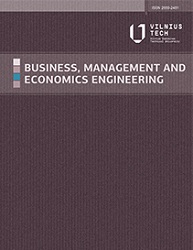PERFORMANCE EVALUATION OF BILATERAL ECONOMIC COOPERATION BETWEEN TAIWAN AND PARTNER COUNTRIES UNDER NEW SOUTHBOUND POLICY: PAST, PRESENT, AND FUTURE
PERFORMANCE EVALUATION OF BILATERAL ECONOMIC COOPERATION BETWEEN TAIWAN AND PARTNER COUNTRIES UNDER NEW SOUTHBOUND POLICY: PAST, PRESENT, AND FUTURE
Author(s): Thi-Nham LeSubject(s): National Economy, Supranational / Global Economy, Economic history, Economic policy, International relations/trade, Political economy, Socio-Economic Research
Published by: Vilnius Gediminas Technical University
Keywords: Taiwan New Southbound Policy; data enveloping analysis (DEA); non-convex DEA; window DEA; forecasting models;
Summary/Abstract: Purpose – in light of the Taiwan New Southbound Policy (NSP), this paper aims to evaluate the performance of bilateral cooperation between Taiwan and its economic partner countries in order to have a better understanding of the coherence of reciprocal relations in the past, present and future. Research methodology – firstly, both individual forecasting models and combining forecasts were employed to predict the future values based on a period of thirty years (1990–2019). Secondly, the paper proposes non-convex DEA to detect non-convex characteristics of datasets where the volume of inputs and outputs were unevenly allocated in past years. Finally, a DEA window was applied to provide efficiency scores for decision-making units (DMUs) across a period of twelve years (2014–2025). Findings – the results found that the efficiency of seven out of eight DMUs will improve in the coming years. With a stable performance in both scale and efficiency, Singapore is Taiwan’s most successful economic partner, followed by Malaysia. The NSP remained as a vital foreign policy in supporting Taiwan’s bilateral trade and outward foreign direct investment (OFDI). Research limitations – more inputs and outputs are required in order to reflect the overall performance of the bilateral cooperation between two economies. Furthermore, more extended models are worth further investigation. Practical implications – the forecasting values of exports and imports can be used in analysing Taiwan economy’s trade deficits. This study provides useful inputs for managers in allocating resources of inbound and outbound values, and reacting rightfully to the uncertain future. Originality/Value – the paper not only contribute much more than previous ones by evaluating into the relationship between size of scale and efficiency of bilateral economies but also provide advices for policymakers in creating mechanisms that can facilitate the NSP’s sustainable development.
Journal: Business, Management and Economics Engineering
- Issue Year: 20/2022
- Issue No: 2
- Page Range: 237-257
- Page Count: 21
- Language: English

